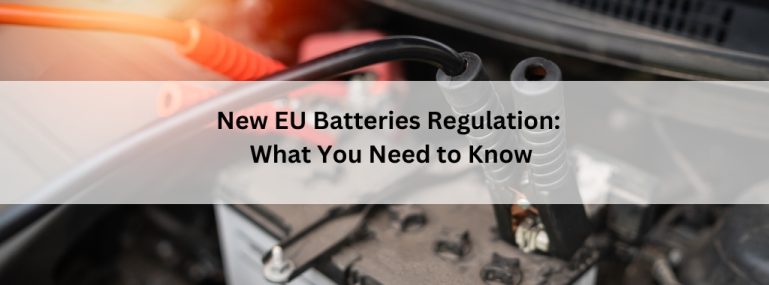The European Union’s new Batteries Regulation represents a significant shift in the regulatory landscape for batteries, aiming to enhance sustainability, reduce environmental impact, and promote circular economy principles. Companies involved in the production, distribution, and recycling of batteries must adapt their programs to comply with the new requirements. In this blog, we outline the key changes in the regulation and provide guidance on how your program needs to evolve to meet these challenges. Compliancexl provides support to their clients with Batteries Regulation.
Understanding the New EU Batteries Regulation:
The new EU Batteries Regulation, replaces the existing Battery Directive, introduces comprehensive measures to address the entire lifecycle of batteries. This includes stringent sustainability requirements, increased producer responsibilities, and enhanced recycling targets. The regulation applies to all types of batteries, including portable, automotive, and industrial batteries.
Key Changes in the Regulation:
Sustainability Requirements:
- Carbon Footprint and Recycling Content: Batteries must now disclose their carbon footprint and include a minimum percentage of recycled materials.
- Design for Durability and Reusability: New standards require batteries to be designed for longer life, reusability, and easier repair and recycling.
Extended Producer Responsibility (EPR):
- Producer Obligations: Producers are responsible for the entire lifecycle of batteries, from design to end-of-life management.
- Collection and Recycling Targets: Stricter targets are set for the collection and recycling of batteries, ensuring higher recovery rates of valuable materials.
Labelling and Information:
- Digital Battery Passport: A digital battery passport will provide detailed information on battery composition, usage, and recycling.
- Clear Labelling: Batteries must be labelled with information on capacity, recycling instructions, and hazardous substances.
Supply Chain Due Diligence:
- Ethical Sourcing: Due diligence must be performed by the Companies on their supply chains to ensure ethical sourcing of raw materials.
- Environmental Impact: Assessments of the environmental impact of battery production and use are mandatory.
Adapting the Program:
Assess Current Practices:
- Thorough review is conducted on the current battery production, distribution, and recycling processes to identify areas needing improvement.
- Carbon footprints and sustainability is evaluated on existing batteries.
Redesign for Sustainability:
- Investment should be made on research and development to create batteries that meet the new durability, reusability, and recyclability standards.
- Recycled materials are incorporate into the battery designs and reliance on virgin raw materials is reduced.
Strengthen EPR Compliance:
- Comprehensive strategies are developed to meet extended producer responsibility requirements.
- Efficient collection and recycling systems are established to achieve the new targets.
Implement Digital Solutions:
- Digital technologies are adopted to create and manage battery passports, ensuring accurate tracking and information sharing.
- Clear and compliant labelling are used on all batteries to provide necessary information to consumers and recyclers.
Enhance Supply Chain Transparency:
- Due diligence is performed on supply chain to ensure compliance with ethical sourcing and environmental impact requirements.
- Collaboration with suppliers to address any identified risks and improve overall sustainability.
Engage Stakeholders:
- Communication with customers, regulators, and other stakeholders about the efforts to comply with the new regulation.
- Industry forums and initiatives are conducted to stay informed about best practices and emerging trends.
The new EU Batteries Regulation presents both challenges and opportunities for companies in the battery industry. By understanding the key changes and proactively adapting your programs, you can ensure compliance, enhance sustainability, and contribute to a more circular economy. Embrace these changes as a catalyst for innovation and progress, positioning your company as a leader in the transition to a more sustainable future. Compliancexl supports its clients to efficiently apply the regulation.





